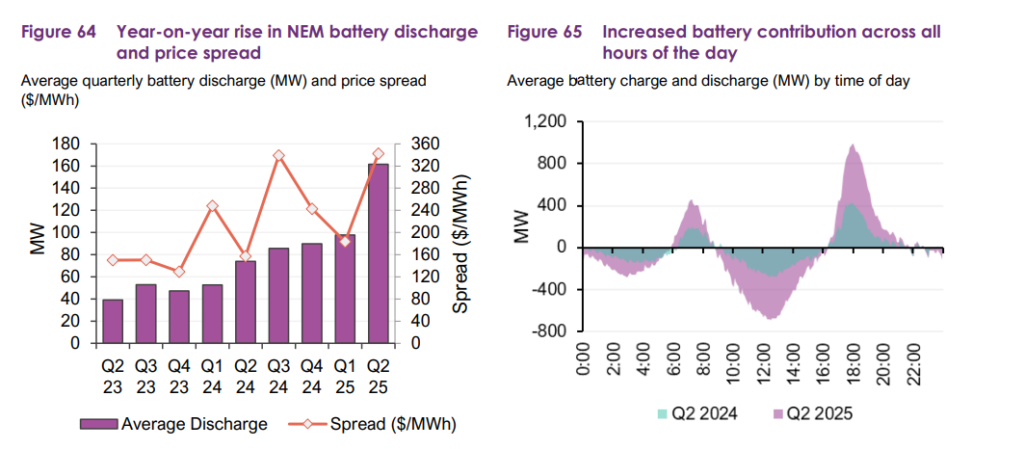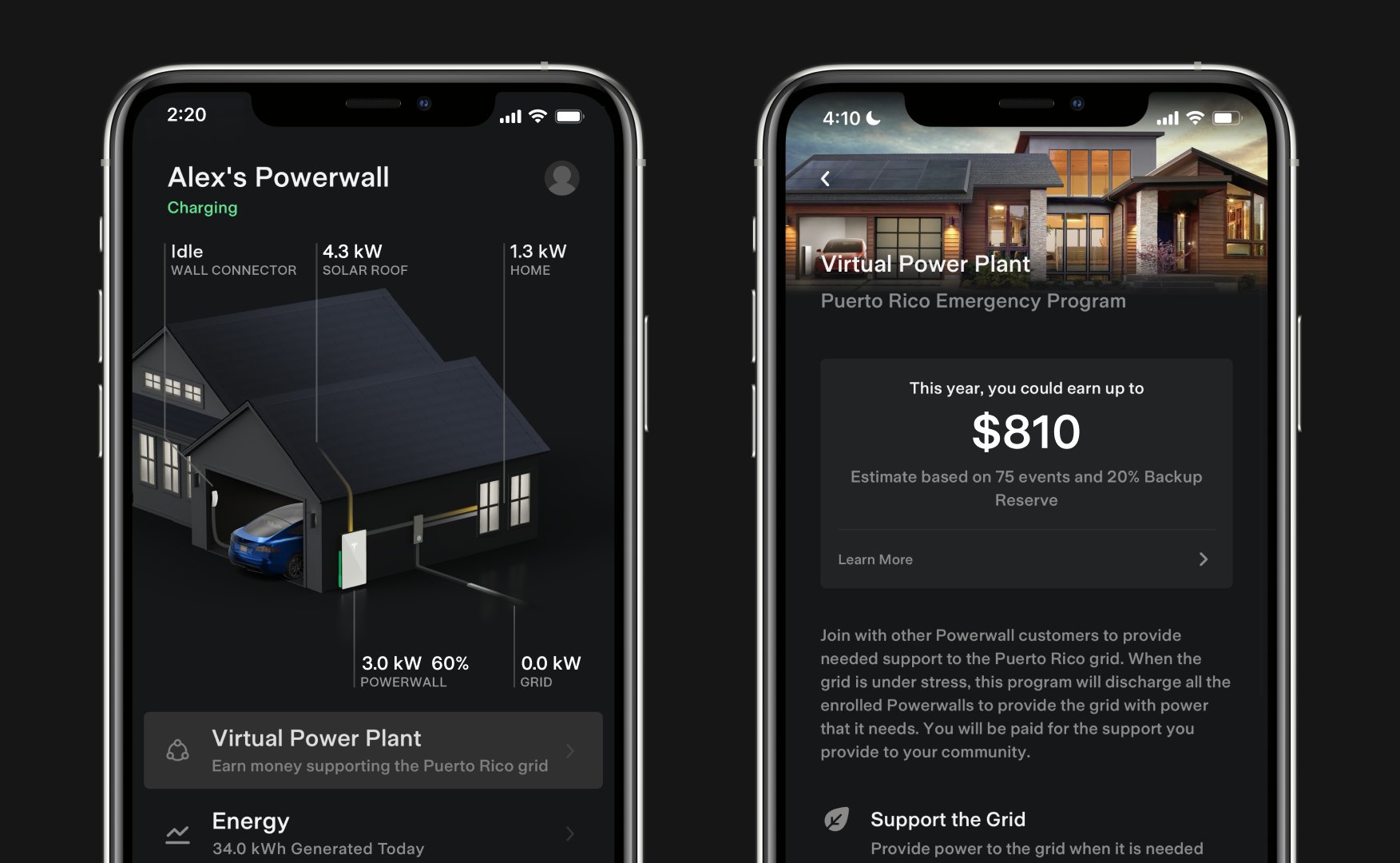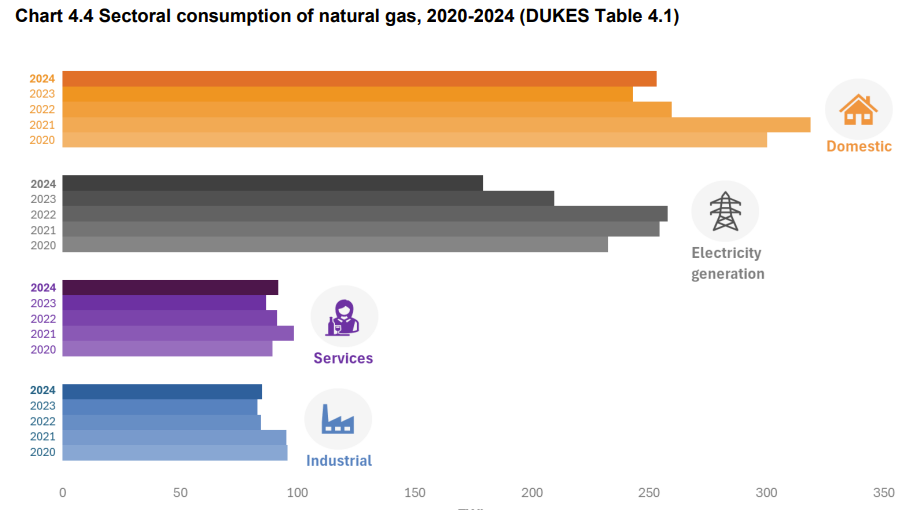We’d like to remind Forumites to please avoid political debate on the Forum.
This is to keep it a safe and useful space for MoneySaving discussions. Threads that are – or become – political in nature may be removed in line with the Forum’s rules. Thank you for your understanding.
The MSE Forum Team would like to wish you all a very Happy New Year. However, we know this time of year can be difficult for some. If you're struggling during the festive period, here's a list of organisations that might be able to help
📨 Have you signed up to the Forum's new Email Digest yet? Get a selection of trending threads sent straight to your inbox daily, weekly or monthly!
Has MSE helped you to save or reclaim money this year? Share your 2025 MoneySaving success stories!
Green, ethical, energy issues in the news
Comments
-
NedS said:I think the main issue here is that NESO are responsible (amongst other things) for balancing the grid - they do not care where that balancing capacity comes from, only that the grid is balanced. They are not responsible for reducing FF use or CO2 output, for example, so there are limited drivers in place to encourage the use of BESS other than it will disappear as an option if it is not used.Two of NESO priorities are:"Clean Power - We will enable a zero-carbon electricity system by adopting a whole system approach, encouraging innovation and collaboration.Decarbonised Energy - We will develop integrated plans for a decarbonised, efficient and flexible energy system fit for the future."6.4kWp (16 * 400Wp REC Alpha) facing ESE + 5kW Huawei inverter + 10kWh Huawei battery. Buckinghamshire.4
-
Bit of news from Aus where the storage is still small and growing, like the rest of the World, but still fascinating to see how it's developing and widening. Especially the way it is absorbing more daytime excess for later use (see fig 65).
In sunny climes (where most of the world population live), solar plus batteries are simply unstoppable now.Grid-scale battery storage discharging hits all-time quarterly high in Australia’s NEM
Grid-scale battery energy storage system (BESS) discharge has hit an all-time quarterly high in Australia’s National Electricity Market (NEM) for an average of 162MW in Q2 of 2025.
According to data in the Australian Energy Market Operator’s (AEMO) latest Quarterly Energy Dynamics report, this represents a 119% increase compared to the same period last year.
The surge in battery activity comes amid a substantial expansion of energy storage capacity across the NEM, which spans Australia’s eastern and southern coasts as well as the island state of Tasmania.
AEMO reports that 3,116MW/6,415MWh of new battery storage capacity has been added to the grid since the end of Q2 2024.
Mart. Cardiff. 8.72 kWp PV systems (2.12 SSW 4.6 ESE & 2.0 WNW). 28kWh battery storage. Two A2A units for cleaner heating. Two BEV's for cleaner driving.
For general PV advice please see the PV FAQ thread on the Green & Ethical Board.2 -
The DUKES report for 2024 is out. Lots of info/data for those that may be interested. UK leccy demand actually went up, only 0.5% to 319TWh, but the trend line has been down for ~20yrs. Might just be a small anomaly for now, but it could be the start of the reversal and upward trend as we move towards 'electrify everything'.
Digest of UK Energy Statistics Annual data for UK, 2024The share of UK electricity generation from renewable technologies reached a new record high of 50.4 per cent in 2024, up from 46.5 per cent last year. Generation from wind reached a record high, solar output matched last year’s record high, and bioenergy generation increased by 17 per cent. Fossil fuel reached a record low of 31.8 per cent of generation, with coal generation ceasing in September of 2024. Gas remained the principal form of UK generation at 30.4 per cent, slightly outpacing wind’s contribution of 29.2 per cent of generation.Chapter 6: Renewable sources of energy
Key headlines
Renewable generation in 2024 reached a new record of 143.7 GWh. Generation was up by 5.1 per cent on 2023, driven by new capacity and an increase in generation from plant biomass which had been dampened in 2022 and 2023 by reduced output at two major sites.
Renewable capacity increased by 7.3 per cent (4.1 GW). Half of the new capacity was in solar PV, the rest was mainly from onshore and offshore wind.
The share of renewable electricity generation in 2024 was 50.4 per cent, a new record and the first time that renewables had accounted for over half of total generation. The generation share was up by 3.9 percentage points on 2023 as a result of greater renewable generation and lower generation from other sources (see Chapter 5 for more details).
Renewable heat increased by just 1.6 per cent with higher heat from heat pumps and wood combustion being offset slightly by decreases in anaerobic digestion and bioliquids. Although heating degree days in 2024 were similar to 2023, higher levels of the stock of heat pumps and domestic wood appliances drove the increase.
As a share of gross final consumption, overall renewables accounted for 16.2 per cent, an increase of 0.5 percentage points on 2023 largely due to relatively higher increases in renewables’ consumption compared with total consumption. The largest contribution was from renewable electricity generation.Mart. Cardiff. 8.72 kWp PV systems (2.12 SSW 4.6 ESE & 2.0 WNW). 28kWh battery storage. Two A2A units for cleaner heating. Two BEV's for cleaner driving.
For general PV advice please see the PV FAQ thread on the Green & Ethical Board.2 -
pete-20-11 said:
I'm on IOF and can't see a virtual power plant link.NedS said:Croft12 said:NedS said:QrizB said:Exiled_Tyke said:This got me thinking about the future of TOU tariffs, growth of EV use and whether it will become viable for the electricity companies to control more of our households than just the EV charger. If they could run the heating (particularly hot water) and may be even some appliances then I wonder how much curtailment could be taken out as well as emergency peak usage of non-RE production.If it was priced right, I'd be happy to fit a smart switch controlled by Octopus to my HW tank immersion heater to let them control my HW heating (much like they do my EV and IOG).It would need to be closer to £50, though, rather than the £900 I paid for the EV charger!I've handed my battery over to Octopus as part of their IOF tariff. The App shows I'm part of a 1080 property VPP, and the other evening we were contributing ~6MW to the grid between us (interestingly, this figure only appears to include the forced export from the battery, not the excess solar that I'd naturally be exporting anyway).Octopus discharge my battery daily during the 4-7pm peak down to it's 20% reserve to support peak grid demand, and pay me 29.8p for the privilege. The battery then sits at it's 20% reserve until the following day where it recharges during the middle of the day helping to mop up all that summer excess solar. Octopus can change the regime around daily to support the grid as required.My spreadsheet modelling tells me no other tariff can get close to IOF in summer where we are large net exporters, so to be able to help balance the grid in this way rather than just dump huge amounts of excess solar on the grid during the middle of the day when it's least needed seems like a win-win to me.
Where do it show your VPP details in the app?If you are participating in a VPP (e.g, Octopus IOF), click the Virtual Power Plant link (1st link) on the main page and it gives details of the number of homes participating and the current amount of power being provided to the grid. It's not there is you are not on a VPP type tariff (which is currently only Octopus IOF in the UK AFAIK).
Unless I'm looking in the wrong place.Do you not have the Virtual Power Plant link as the first link in the Tesla app, like this image on left below (not my image):
Our green credentials: 12kW Samsung ASHP for heating, 7.2kWp Solar (South facing), Tesla Powerwall 3 (13.5kWh), Net exporter0 -
I suspect we may already have plucked most of the low hanging fruit no things like LED bulbs and the end of CRT TV whereas we are starting to see increasing volumes for EVs and heat pumps (although I suspect the latter will still be a rounding error)Martyn1981 said:The DUKES report for 2024 is out. Lots of info/data for those that may be interested. UK leccy demand actually went up, only 0.5% to 319TWh, but the trend line has been down for ~20yrs. Might just be a small anomaly for now, but it could be the start of the reversal and upward trend as we move towards 'electrify everything'.
Digest of UK Energy Statistics Annual data for UK, 2024The share of UK electricity generation from renewable technologies reached a new record high of 50.4 per cent in 2024, up from 46.5 per cent last year. Generation from wind reached a record high, solar output matched last year’s record high, and bioenergy generation increased by 17 per cent. Fossil fuel reached a record low of 31.8 per cent of generation, with coal generation ceasing in September of 2024. Gas remained the principal form of UK generation at 30.4 per cent, slightly outpacing wind’s contribution of 29.2 per cent of generation.Chapter 6: Renewable sources of energy
Key headlines
Renewable generation in 2024 reached a new record of 143.7 GWh. Generation was up by 5.1 per cent on 2023, driven by new capacity and an increase in generation from plant biomass which had been dampened in 2022 and 2023 by reduced output at two major sites.
Renewable capacity increased by 7.3 per cent (4.1 GW). Half of the new capacity was in solar PV, the rest was mainly from onshore and offshore wind.
The share of renewable electricity generation in 2024 was 50.4 per cent, a new record and the first time that renewables had accounted for over half of total generation. The generation share was up by 3.9 percentage points on 2023 as a result of greater renewable generation and lower generation from other sources (see Chapter 5 for more details).
Renewable heat increased by just 1.6 per cent with higher heat from heat pumps and wood combustion being offset slightly by decreases in anaerobic digestion and bioliquids. Although heating degree days in 2024 were similar to 2023, higher levels of the stock of heat pumps and domestic wood appliances drove the increase.
As a share of gross final consumption, overall renewables accounted for 16.2 per cent, an increase of 0.5 percentage points on 2023 largely due to relatively higher increases in renewables’ consumption compared with total consumption. The largest contribution was from renewable electricity generation.I think....1 -
michaels said:... we are starting to see increasing volumes for EVs and heat pumps (although I suspect the latter will still be a rounding error)DUKES also reports on road fuels and natural gas, so it'll be interesting to see if there's a dip in those figures.But I'm not looking tonight, it's past my bedtime.N. Hampshire, he/him. Octopus Intelligent Go elec & Tracker gas / Vodafone BB / iD mobile. Ripple Kirk Hill Coop member.Ofgem cap table, Ofgem cap explainer. Economy 7 cap explainer. Gas vs E7 vs peak elec heating costs, Best kettle!
2.72kWp PV facing SSW installed Jan 2012. 11 x 247w panels, 3.6kw inverter. 34 MWh generated, long-term average 2.6 Os.2 -
Looking at the gas chart, I don't think domestic HP's have had any significant impact yet, as I assume the drop from 2022 is simply down to the gas price spike (reflected in industrial demand too). Domestic gas coonsumption now accounts for 37% of total demand, so ripe for plucking, but in reality that'll be very slow, I suspect.QrizB said:michaels said:... we are starting to see increasing volumes for EVs and heat pumps (although I suspect the latter will still be a rounding error)DUKES also reports on road fuels and natural gas, so it'll be interesting to see if there's a dip in those figures.But I'm not looking tonight, it's past my bedtime.
Gas for leccy generation demand though is far more interesting. Aside from the Covid rebound, looks like it was relatively steady for a few years, but as coal ended, and RE grew, then started a more significant decline. Two years may be too short for a trend line, but it does look like gas for leccy gen could be largely removed by 2030, if RE expansion can be maintained. [Though of course, both off shore wind commissioning, and annual wind fluctuations, can make for lumpy results.]
Not sure I'm finding anything interesting in the road fuels, though the total is down slightly on pre-covid, and starting to reflect the shift from diesel car sales to petrol*. I assume the small PEV change in the total fleet, will have more of an impact now going forward, as the annual new car sales reflect a more significant 20%+ PEV figure?*Over 40 per cent of transport fuel demand was accounted for by diesel vehicles – cars, goods vehicles and buses. Nonetheless, diesel demand has not shown the post-pandemic recovery that petrol and jet fuel have but rather has continued decreasing steadily since a peak of 25 million tonnes in 2017. From 2000 to 2017, demand from diesel vehicles increased by 60 per cent. From 2017 to 2024, demand fell by one fifth. This is partly due to an increase in biodiesel, but also the increasing popularity of electric vehicles, and motorists switching away from diesel due to environmental concerns since the emissions scandal around 2017 to 2018 .Mart. Cardiff. 8.72 kWp PV systems (2.12 SSW 4.6 ESE & 2.0 WNW). 28kWh battery storage. Two A2A units for cleaner heating. Two BEV's for cleaner driving.
For general PV advice please see the PV FAQ thread on the Green & Ethical Board.3 -
Some (many?) of us have microbore pipes that heat pumps can't deal with. We had a chap from Octopus come to measure up who stated that our 10mm pipes would be fine. Computer says no. Engineer came to check and said the spiders web of pipes in our airing cupboard mean we'd have to have new pipes fitted, coming down the walls from the loft of our bungalow. That's not going to happen so we're stuck with the gas boiler.Martyn1981 said:I don't think domestic HP's have had any significant impact yet,The mind of the bigot is like the pupil of the eye; the more light you pour upon it, the more it will contract.
Oliver Wendell Holmes1 -
A heat pump with R290 refrigerant can run at higher temperatures with reasonable efficiency, so 10mm microbore would be adequate.NigeWick said:
Some (many?) of us have microbore pipes that heat pumps can't deal with. We had a chap from Octopus come to measure up who stated that our 10mm pipes would be fine. Computer says no. Engineer came to check and said the spiders web of pipes in our airing cupboard mean we'd have to have new pipes fitted, coming down the walls from the loft of our bungalow. That's not going to happen so we're stuck with the gas boiler.Martyn1981 said:I don't think domestic HP's have had any significant impact yet,0 -
I am in same situation as you but being in a house with chipboard floorboards make it worse so waiting for a single room ashp which may help reduce gas use maybe with storage heater or a radiant heater0
Confirm your email address to Create Threads and Reply

Categories
- All Categories
- 353K Banking & Borrowing
- 253.9K Reduce Debt & Boost Income
- 454.8K Spending & Discounts
- 246.1K Work, Benefits & Business
- 602.2K Mortgages, Homes & Bills
- 177.8K Life & Family
- 260K Travel & Transport
- 1.5M Hobbies & Leisure
- 16K Discuss & Feedback
- 37.7K Read-Only Boards







